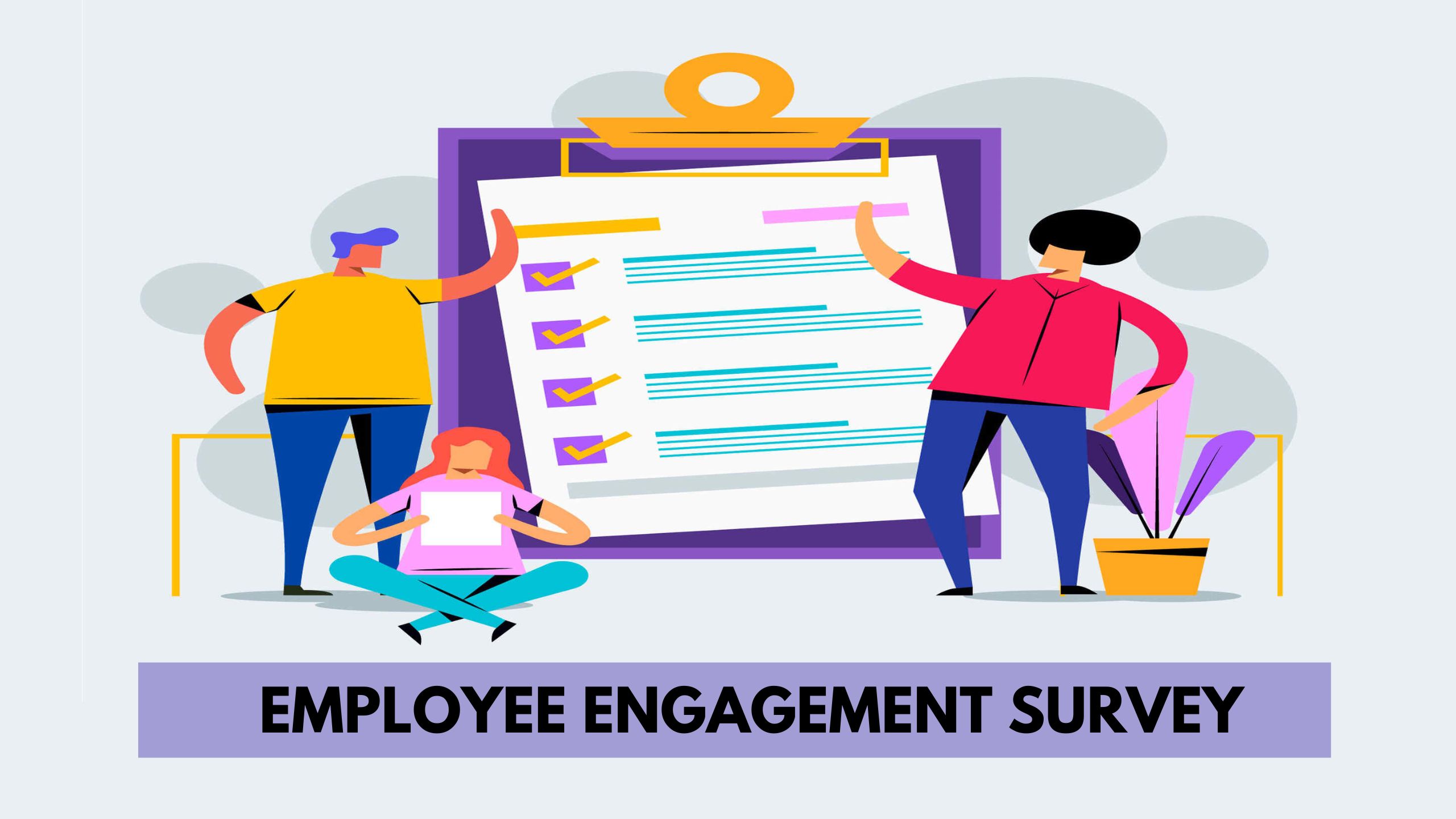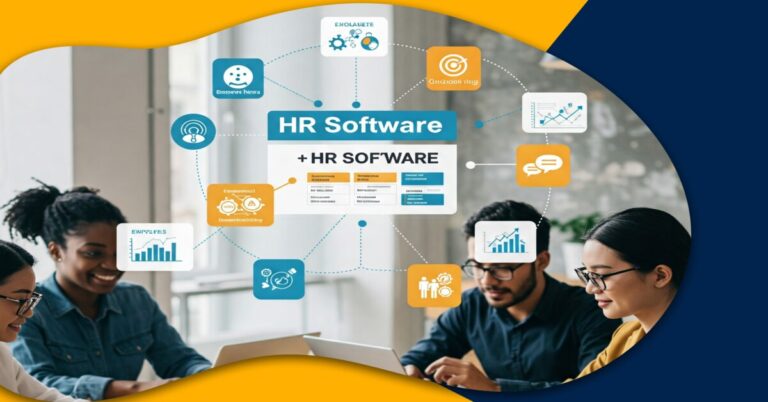Employee engagement is an organization’s heartbeat. When employees feel connected, valued, and motivated, they contribute their best, leading to better productivity, innovation, and overall organizational success.
However, understanding employee engagement surveys isn’t straightforward. This is where an employee engagement survey comes in—a structured way to measure employee engagement and identify areas for improvement.
Companies are optimizing their survey processes and investing in technologies that facilitate better participation rates and clearer data analysis in the pursuit of enhancing employee engagement.
For Indian organizations, with their diverse workforce and cultural nuances, a well-designed engagement survey can provide valuable insights and help create a more cohesive and motivated workplace.
What is an Employee Engagement Survey?
An employee engagement survey is a powerful tool used to measure the level of engagement of your workforce. It is a questionnaire designed to gather both quantifiable and unquantifiable data on engagement drivers and pain points, providing valuable insights into the current state of employee engagement within your organization.
Employee engagement surveys can be delivered in multiple formats, such as online forms, paper surveys, or mobile apps, to gauge the current levels of engagement of your workforce. By understanding what motivates and challenges your employees, you can make informed decisions to enhance their work experience and overall satisfaction.
Why Employee Engagement Surveys Matter
An employee engagement survey is more than just a questionnaire. It’s a tool to:
- Gauge Employee Sentiment: Understand how employees perceive their roles, leadership, and organizational culture.
- Identify Strengths and Weaknesses: Highlight what the organization is doing right and areas that need improvement.
- Boost Retention: Engaged employees are less likely to leave. Surveys help identify dissatisfaction before it leads to attrition.
- Enhance Productivity: Employees who feel heard and valued are more motivated to give their best.
- Strengthen Employer-Employee Relationship: Regular surveys show employees that their opinions matter, fostering trust and openness.
Preparing for the Survey
Preparing for an employee engagement survey is crucial to ensure its success. Here are some key steps to consider:
Define the Purpose
Before creating an employee engagement survey, identify the goals. Ask yourself:
- What do we want to achieve through this survey?
- Are we looking to improve communication, reduce turnover, or enhance workplace culture?
Having a clear purpose ensures that the survey questions are relevant and focused. For instance, an Indian IT firm might want to understand why employees feel overworked, while a manufacturing unit may focus on safety concerns.
Identifying the Targeted Employee Group
Identifying a representative employee group is essential to create a baseline for your employee engagement survey. This group should cut across multiple departments, ranks, and locations, including employees at the lowest rung to key team leaders.
By targeting a diverse group, you can gather a comprehensive understanding of employee engagement across your organization. This approach ensures that the survey results reflect the experiences and sentiments of all employees, providing a holistic view of employee engagement.
Get Leadership Buy-In
Engagement surveys require time, effort, and, often, budget. Leadership support is crucial for:
- Allocating resources.
- Encouraging participation.
- Acting on the results.
Explain to leaders how the survey aligns with organizational goals and the benefits of acting on employee feedback.
Design the Survey
A well-crafted survey is the backbone of the process.
- Keep It Simple:
Use clear, concise language to ensure every employee understands the questions. Avoid jargon. - Focus on Key Areas:
Include questions about:- Job satisfaction.
- Leadership effectiveness.
- Communication.
- Work-life balance.
- Career growth opportunities.
- Use a Mix of Question Types:
- Likert Scale Questions: For example, “On a scale of 1 to 5, how satisfied are you with your current role?”
- Open-Ended Questions: For deeper insights, e.g., “What changes would make your work experience better?”
- Yes/No Questions: For straightforward answers.
- Cultural Sensitivity:
In India, employees may hesitate to share negative feedback. Ensure the tone is neutral and non-threatening.
Crafting Effective Survey Questions
Crafting effective employee engagement survey questions is critical to gathering meaningful data. A common mistake is trying to capture data about all drivers of engagement. Instead, start with a hypothesis, such as “X% of the workforce risks turnover because of the Y factor.”
Formulate survey questions to validate or negate this hypothesis. Ensure that your survey questions are clear, concise, and relevant to your employees. For example, instead of asking broad questions, focus on specific areas like job satisfaction, leadership effectiveness, and work-life balance to get actionable insights.
Choose the Right Platform
Decide how you’ll distribute the survey:
- Online Tools: Platforms like Google Forms, SurveyMonkey, or specialized HR tools like Darwinbox are great for digital-savvy workplaces.
- Paper Surveys: Ideal for factory workers or employees in roles without regular access to computers.
- Mobile Surveys: Particularly effective in India, where smartphone penetration is high.
Ensure the platform used for the employee engagement survey is user-friendly and accessible in multiple languages if needed.
Ensure Anonymity
Employees are more likely to provide honest feedback if they know their responses are anonymous. As such, an employee engagement survey should:
- Communicate that their identities won’t be linked to their answers.
- Use third-party tools if trust issues exist.
Anonymity encourages employees to share genuine opinions, especially in culturally diverse workplaces where fear of repercussions might hinder participation.
How to Conduct an Employee Engagement Survey
Survey Distribution and Communication
Survey distribution and communication are vital to ensure high participation rates. Decide on the best method to distribute your survey, such as email, intranet, or mobile app. Clearly communicate the purpose of the survey, its benefits, and how the data will be used to improve employee engagement.
Emphasize the importance of employee participation and anonymity to encourage honest feedback through the employee engagement survey. Use multiple communication channels to remind employees about the survey and its significance, ensuring maximum reach and participation.
Survey Timing and Frequency
Survey timing and frequency are crucial to ensure that your survey is effective. Consider the 12-month (annual) survey as an industry standard, helping gather meaningful data from most employees. Companies new to employee engagement surveys can start by adopting an 18-month frequency with detailed questionnaires.
Shorter surveys can be shared at key moments of the employee experience lifecycle, such as onboarding, exit, or during significant organizational changes. This approach helps capture real-time feedback and address issues promptly, fostering a culture of continuous improvement.
By following these steps, you can ensure that your employee engagement survey is well-prepared, effectively distributed, and yields valuable insights to enhance employee engagement within your organization.
Encourage Participation
Even the best survey won’t be effective if participation is low.
- Communicate the Benefits: Explain how their feedback will drive positive changes.
- Timing Matters: Avoid survey rollouts during peak work periods.
- Incentivize Participation: Offer small rewards, such as gift cards or recognition for teams with high response rates.
Analyze the Results
Once the survey is complete, dive into the data:
- Identify trends and patterns.
- Pay attention to recurring themes in open-ended responses.
- Segment the data by department, role, or location to uncover specific issues.
For example, if employees in a particular branch express dissatisfaction with leadership, it might indicate the need for targeted managerial training.
Share Findings with Employees
Transparency is crucial. Once the data is analyzed:
- Share a summary of key findings with employees.
- Highlight areas of strength and acknowledge areas needing improvement.
- Use visuals like graphs and charts for better understanding.
Take Action on Feedback
The true value of an engagement survey lies in acting on the insights.
- Quick Wins: Address easily solvable issues first to build trust.
- Long-Term Strategies: Develop detailed action plans for more complex challenges.
For instance, if employees express a lack of career growth opportunities, you could implement a mentorship program or introduce regular training sessions.
Follow Up
Engagement is an ongoing process. Regularly check in with employees to ensure changes are effective. Conduct follow-up employee engagement surveys to track progress and show employees their feedback is valued.
Common Challenges and Solutions
Challenge 1: Low Participation
- Solution: Use multiple communication channels to promote and emphasize the importance of employee engagement surveys.
Challenge 2: Fear of Repercussions
- Solution: Guarantee anonymity and reassure employees that their feedback is safe.
Challenge 3: Lack of Leadership Support
- Solution: Present data linking engagement to productivity and retention to gain leadership buy-in.
Challenge 4: Cultural Barriers
- Solution: Tailor the survey to address cultural sensitivities and provide language options.
Benefits of Conducting Employee Engagement Surveys
- Enhanced Morale: Employees feel valued when their opinions are sought and acted upon.
- Improved Retention: Addressing concerns early reduces turnover rates.
- Better Decision-Making: Data-driven insights guide organizational strategies.
- Stronger Workplace Culture: Open communication fosters trust and collaboration.
Conclusion
An employee engagement survey is more than a tool—it’s a commitment to understanding and improving your workforce’s experience. In India’s diverse corporate landscape, conducting meaningful surveys can be a game-changer for organizations building motivated, loyal, high-performing teams.
Organizations can create a work environment where employees thrive by following the steps outlined in this article and genuinely acting on feedback. Remember, engagement is a journey, not a one-time task. Regular surveys and continuous improvements will ensure your employees feel valued and engaged, driving long-term success for your organization.






